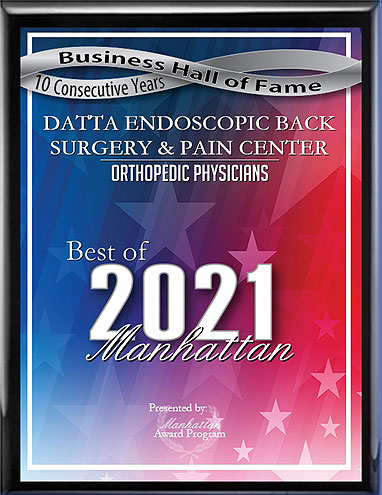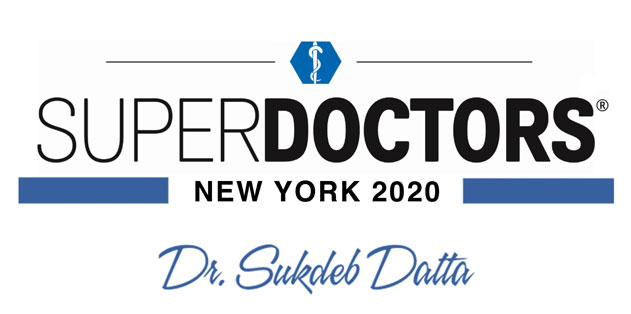Cervical spinal stenosis is any condition that causes a narrowing of the spinal canal, including herniated discs, bone spurs, and spondylolisthesis. Cases range from mild to severe. In some cases, surgery may be required. Below, we'll explore the basics of cervical spinal stenosis and its treatment.
About Cervical Spinal Stenosis
Causes of cervical spinal stenosis include, but are not limited to:
- Herniated discs
- Bulging discs
- Degenerative disc disease
- Bone spurs
- Spondylolisthesis
- Spinal tumors (rare)
Symptoms can manifest throughout the body, and include neck pain, back pain, arm or leg pain, and numbness or tingling in the arms or legs. Most cases are mild to moderate, but some cases are severe and progressive. Because the nerves located in the neck supply the entire body, severe, progressive spinal stenosis may have the potential to cause paralysis, making treatment more essential than treatment for conditions that affect the lower spine.
Traditional Spine Surgery
Traditional spine surgery is an effective but very invasive procedure. With this method, the physician makes a large incision along the spine, allowing access to the affected portion. Next, the physician performs the operation, which often requires cutting through bone or fusing the vertebrae together.
The recovery time after traditional spine surgery is lengthy. The procedure is performed in the hospital under general anesthesia, and patients stay in the hospital for several days after surgery. Most patients miss work for up to 6 weeks, and it can take months to make a full recovery.
Minimally Invasive Options
Minimally invasive spine surgery represents a good alternative to traditional spine surgery for patients with common spine conditions such as herniated discs. Laser spine surgery is one of the most effective and versatile procedures for cervical spinal stenosis. During this procedure, microscopic incisions - about the size of a needle - are made along the spine. A camera is inserted through one incision, and a laser probe is inserted through the other. The camera guides the probe, and the affected portion of the disc is dissolved without cutting through bone or muscle.
The benefits to laser spine surgery are numerous. The procedure can be performed in an outpatient setting under only local anesthesia and sedation, so patients can return home the same day. Relief from symptoms is often immediate. Patients with desk jobs can expect to return to work in about a week, and most patients make a full recovery in around 6 weeks.
Who is a Candidate?
Only a doctor can tell you whether you are a candidate for cervical spinal stenosis surgery. Unless the condition is severe, progressive, or unlikely to respond to conservative treatment, it's usually best to start out with non-invasive treatments. The majority of cervical spinal stenosis patients can achieve relief using medication, physical therapy, and other non-invasive methods.
Surgery may be considered if these methods are ineffective or if the condition is severe or getting progressively worse. You may still be a candidate for minimally invasive cervical spinal stenosis surgery even if you have been told that you are not a candidate for traditional spine surgery.
Long-Term Spinal Health Promotion
After surgery, you will probably undergo physical therapy for some time. Although physical therapy ends, taking steps to promote your overall spinal health should continue throughout life. Taking care of your spine can prevent symptom flare-ups and the development of further spine problems. Important lifestyle changes include:
- Using proper lifting technique when lifting heavy objects
- Using proper posture
- Exercising on a regular basis
- Establishing and/or maintaining a healthy body weight
- Not smoking cigarettes
Choosing a Doctor
The spine is one of the most essential parts of the body, and there is some risk involved even with routine or minimally invasive procedures. Although those risks can never be completely eliminated, choosing a skilled doctor is one step you can take to minimize the risks associated with surgery.
Some of the most important things to look for in a doctor include:
- Use of minimally invasive procedures - Choosing a doctor who offers treatments like laser spine surgery can improve your outcomes.
- Experience - Doctors develop their skills and judgment as they get experience in the field, so most patients prefer a more experienced doctor. At the same time, finding a doctor who continues to learn and innovate rather than blindly sticking to the old ways is just as important as finding an experienced physician.
- Expertise - Be sure to choose a doctor who has experience treating your particular condition. This is especially important if you have an unusual or complex condition.
- Pain management background - Pain is its own branch of medicine, and has complex causes and treatments. A physician with a pain management background will be able to best address your condition in a comprehensive manner.
- Insurance affiliation - To get insurance coverage, the physician must be affiliated with your insurance provider. Contact the physician or your insurance company for this information.
- Bedside manner - You should feel comfortable raising concerns with your doctor, and find that communication is clear and helpful. Although bedside manner is subjective, you should basically trust your gut judgment when it comes to choosing a doctor.
- What others say - Friends and family might be able to tell you about a doctor they've had in the past. In addition, online reviews and testimonials can give some valuable information about what past patients have experienced with a physician.
Top NYC Physicians
Dr. Sukdeb Datta of the Datta Endoscopic Back Surgery and Pain Center is the top cervical spinal stenosis doctor in the country. Dr. Datta is equally skilled in pain management and in the treatment of common spine conditions, and he offers a wide range of treatments to comprehensively address spine conditions. Dr. Datta's patients appreciate his good bedside manner, the smooth office experiences, and the individualized approach to developing a treatment plan. Dr. Datta's clinical judgment and technical skills are excellent, ensuring that each patient gets appropriate and effective treatment.
Dr. Datta would be happy to meet with you about your cervical spinal stenosis. To schedule your consultation today, please click below and enter your information or give us a call at (212) 430-0312.






 EDISCSCULPT
EDISCSCULPT



